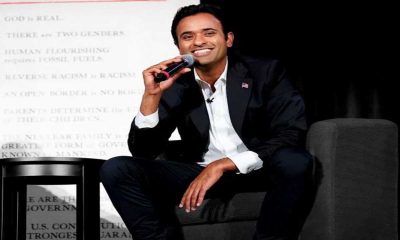Latest Science News
India readies plan to get from moon n-fuel enough to power the world for centuries
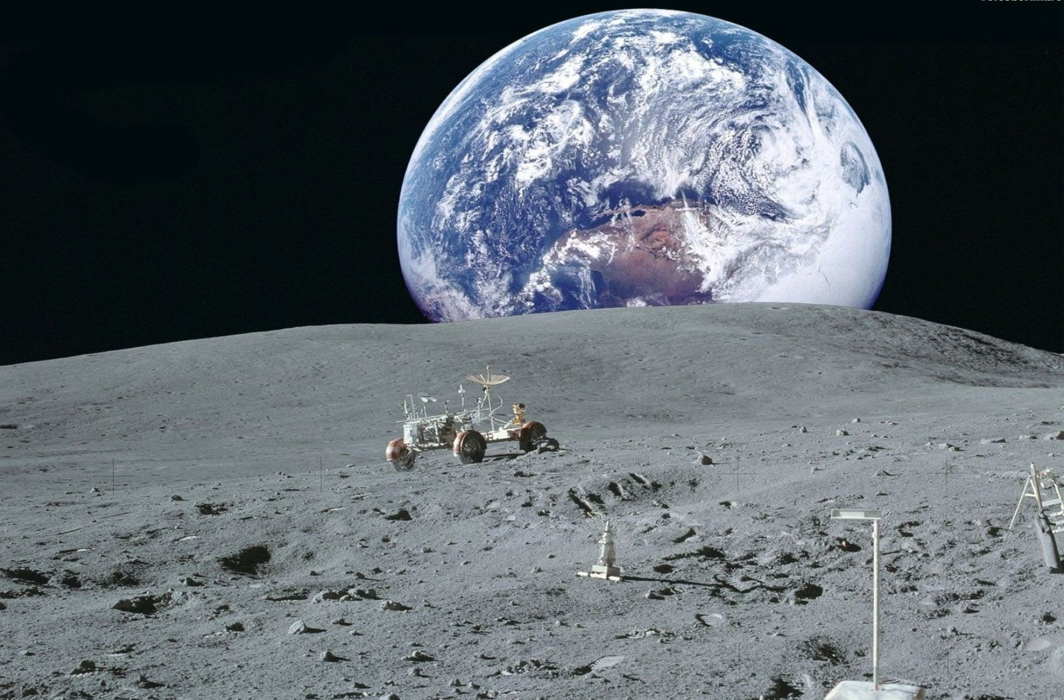
India’s space program wants to go where no nation has gone before – to the south side of the moon, said a Bloomberg report. And once India gets there, says the report, it will study the potential for mining a source of waste-free nuclear energy that could be worth trillions of dollars.
The Indian Space Research Organisation (ISRO) – the nation’s equivalent of NASA – will launch a rover in October to explore virgin territory on the lunar surface and analyze crust samples for signs of water and helium-3. That isotope is limited on Earth yet so abundant on the moon that it theoretically could meet global energy demands for 250 years if harnessed.
“The countries which have the capacity to bring that source from the moon to Earth will dictate the process,” said ISRO chairman K Sivan, “I don’t want to be just a part of them, I want to lead them.”
The mission would solidify India’s place among the fleet of explorers racing to the moon, Mars and beyond for scientific, commercial or military gains. The governments of the US, China, India, Japan and Russia are competing with startups and billionaires Elon Musk, Jeff Bezos and Richard Branson to launch satellites, robotic landers, astronauts and tourists into the cosmos.
The rover landing is one step in an envisioned series for ISRO that includes putting a space station in orbit and, potentially, an Indian crew on the moon. The government has yet to set a timeframe.
“We are ready and waiting,” said Sivan, an aeronautics engineer who joined ISRO in 1982. “We’ve equipped ourselves to take on this particular program.”
China is the only country to put a lander and rover on the moon this century with its Chang’e 3 mission in 2013. The nation plans to return later this year by sending a probe to the unexplored far side.
In the US, President Donald Trump signed a directive calling for astronauts to return to the moon, and NASA’s proposed $19 billion budget this fiscal year calls for launching a lunar orbiter by the early 2020s.
ISRO’s estimated budget is less than a 10th of that – about $1.7 billion – but accomplishing feats on the cheap has been a hallmark of the agency since the 1960s. The upcoming mission will cost about $125 million – or less than a quarter of Snap Inc. co-founder Evan Spiegel’s compensation last year, the highest for an executive of a publicly traded company, according to the Bloomberg Pay Index.
This won’t be India’s first moon mission. The Chandrayaan-1 craft, launched in October 2008, completed more than 3,400 orbits and ejected a probe that discovered molecules of water in the surface for the first time.
The upcoming launch of Chandrayaan-2 includes an orbiter, lander and a rectangular rover. The six-wheeled vehicle, powered by solar energy, will collect information for at least 14 days and cover an area with a 400-meter radius.
The rover will send images to the lander, and the lander will transmit those back to ISRO for analysis.
A primary objective, though, is to search for deposits of helium-3. Solar winds have bombarded the moon with immense quantities of helium-3 because it’s not protected by a magnetic field like Earth is.
The presence of helium-3 was confirmed in moon samples returned by the Apollo missions, and Apollo 17 astronaut Harrison Schmitt, a geologist who walked on the moon in December 1972, is an avid proponent of mining helium-3.
“It is thought that this isotope could provide safer nuclear energy in a fusion reactor, since it is not radioactive and would not produce dangerous waste products,” the European Space Agency said.
There are an estimated 1 million metric tons of helium-3 embedded in the moon, though only about a quarter of that realistically could be brought to Earth, said Gerald Kulcinski, director of the Fusion Technology Institute at the University of Wisconsin-Madison and a former member of the NASA Advisory Council.
That’s still enough to meet the world’s current energy demands for at least two, and possibly as many as five, centuries, Kulcinski said. He estimated helium-3’s value at about $5 billion a ton, meaning 250,000 tons would be worth in the trillions of dollars.
To be sure, there are numerous obstacles to overcome before the material can be used – including the logistics of collection and delivery back to Earth and building fusion power plants to convert the material into energy. Those costs would be stratospheric.
“If that can be cracked, India should be a part of that effort,” said Lydia Powell, who runs the Centre for Resources Management at the New Delhi-based Observer Research Foundation think tank. “If the cost makes sense, it will become a game-changer, no doubt about it.”
Plus, it won’t be easy to mine the moon. Only the U.S. and Luxembourg have passed legislation allowing commercial entities to hold onto what they have mined from space, said David Todd, head of space content at Northampton, England-based Seradata Ltd. There isn’t any international treaty on the issue.
“Eventually, it will be like fishing in the sea in international waters,” Todd said. “While a nation-state cannot hold international waters, the fish become the property of its fishermen once fished.”
India’s government is reacting to the influx of commercial firms in space by drafting legislation to regulate satellite launches, company registrations and liability, said GV Anand Bhushan, a Chennai-based partner at the Shardul Amarchand Mangaldas & Co. law firm. It doesn’t cover moon mining.
Yet the nation’s only spaceman isn’t fully on board with turning the moon into a place of business.
Rakesh Sharma, who spent almost eight days aboard a Russian spacecraft in 1984, said nations and private enterprises instead should work together to develop human colonies elsewhere as Earth runs out of resources and faces potential catastrophes such as asteroid strikes.
“You can’t go to the moon and draw boundaries,” Sharma said. “I want India to show that we’re capable of utilizing space technology for the good of people.” – Bloomberg
India News
President Droupadi Murmu launches India’s first homegrown CAR T-cell therapy for cancer treatment
The gene-based therapy, which is developed by the IIT Bombay and Tata Memorial Centre, is being rolled out in India at about one-tenth of its price outside the country.
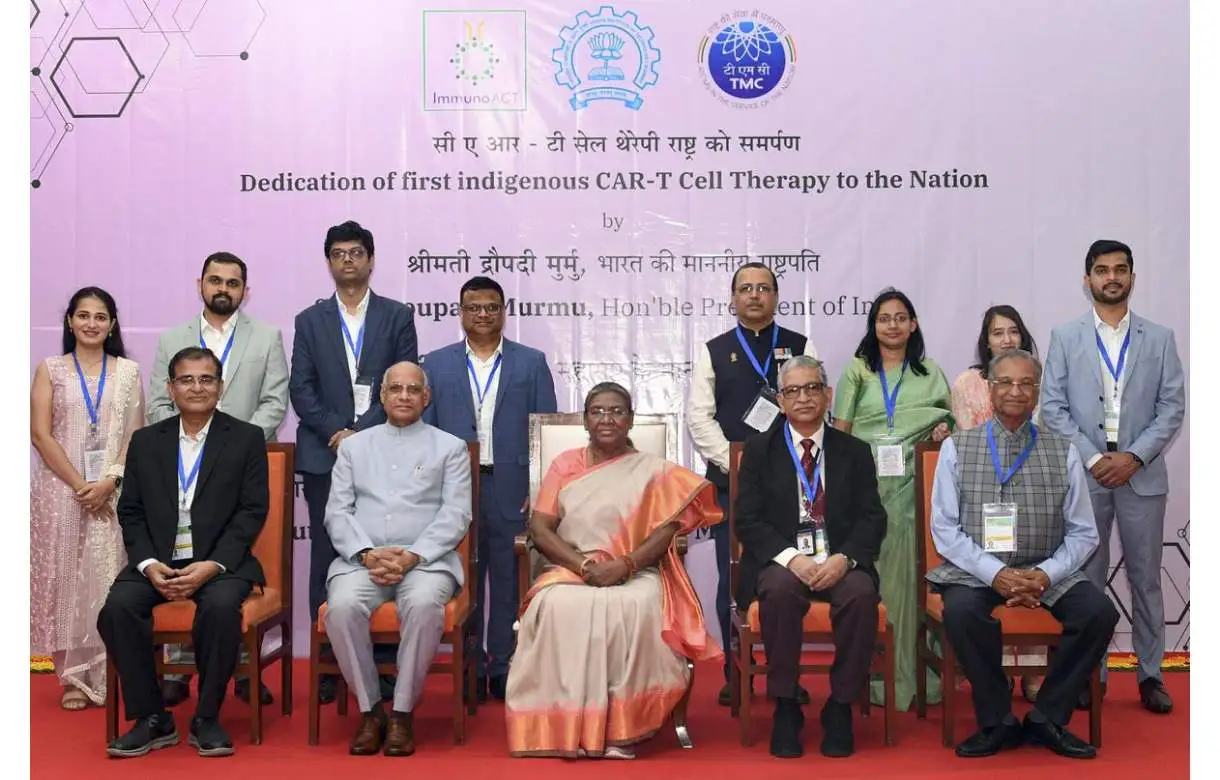
President Droupadi Murmu on Thursday launched India’s first indigenously-developed CAR T-cell therapy, a gene-based therapy, for cancer treatment, hailing it as a breakthrough that provides new hope for humankind in the battle against the diseases.
Speaking at the launch event at the Indian Institute of Technology (IIT) Bombay, Murmu said the indigenous development of the CAR T-cell therapy was an example of the Make in India initiative.
The gene-based therapy, which is developed by the IIT Bombay and Tata Memorial Centre, is being rolled out in India at about one-tenth of its price outside the country, as per the senior official.
In CAR T-cell therapy, a patient’s T-cells, which is a type of immune system cell or stem cell, are modified in the laboratory and inserted back into the patient to attack and destroy cancer cells after editing the stem cell.
The NexCAR19 CAR T-cell therapy, the country’s first Made in India CAR T-cell therapy, is expected to bring down the cost of treatment significantly.
During her speech, Murmu said that this therapy is considered a phenomenal advance in medical sciences. The development of this therapy is also an example of the Make in India initiative and speaks volumes about Indian scientists and physicians, she added.
The launch of India’s first gene therapy is a significant breakthrough in the battle against cancer. As this line of treatment, named CAR T-cell therapy, is accessible and affordable, it provides a new hope for the whole of humankind, President Murmu further added.
The Tata Memorial Centre director Sudeep Gupta said the CAR T-cell therapy was enormously expensive and out of the reach of an overwhelming majority of people.
Asserting that, he said NexCar19 needs to be custom manufactured for every patient under the most stringent conditions, but it has been rolled out at approximately one-tenth of the price at which it is available outside India.
The treatment costs approximately Rs 4 crore abroad against Rs 30 lakh in India, said IIT Bombay director Prof Subhasis Chaudhuri.
He further said that the low-cost CAR T-cell therapy was a huge achievement for the country and cancer patients, and places India firmly on the global map of cell and gene therapy.
Comparing the achievement of Chandrayaan-3 with CAR T-cell therapy, Chaudhuri asserted that CAR-T cell therapy heralds India’s entry into the cell and genetic engineering group.
The Tata Memorial Centre director Gupta said the treatment will help some 20,000 Indians every year, and its rollout is a milestone in the field of cancer care and genetic engineering.
He added the CAR T-cell was not only a scientific achievement of the highest order but also had immense practical application. NexCAR19 will save many, many lives and wipe many, many tears, he emphasised.
India News
ISRO launches weather satellite INSAT-3DS to monitor Earth’s surface, oceans
The Naughty Boy has now become a mature, obedient and disciplined boy like PSLV, and GSLV as they have become a very robust vehicle for ISRO, said Tomy Joseph.
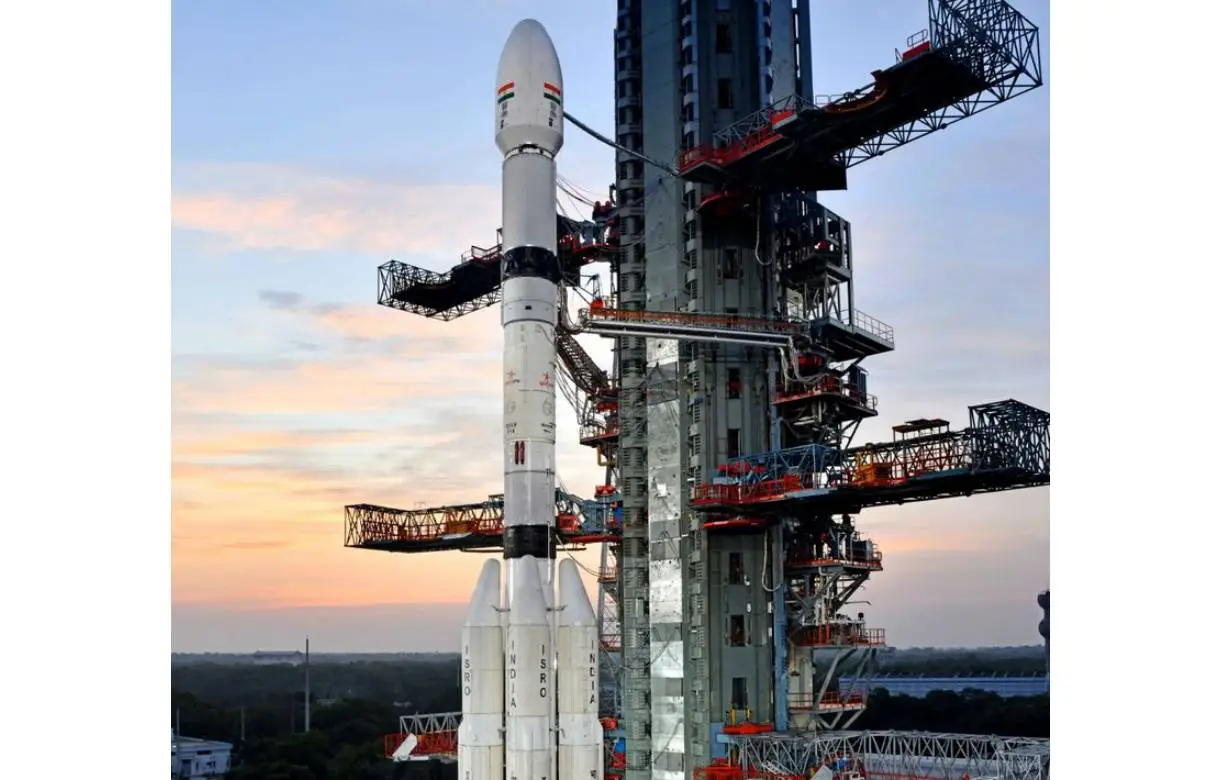
The Indian Space Research Organisation (ISRO) on Saturday launched the INSAT-3DS mission from Satish Dhawan Space Centre in Sriharikota at 5:35 pm to monitor the Earth’s surface, observe the ocean and analyse the environment through various essential meteorological perspectives.
In its mission, the Geosynchronous Satellite Launch Vehicle (GSLV) aimed to deploy the INSAT-3DS meteorological satellite into the Geosynchronous Transfer Orbit (GTO). Subsequent orbit-raising maneuvers will ensure that the satellite is positioned in a Geo-stationary Orbit.
After being positioned in GSO, it will provide information on diverse atmospheric conditions via vertical profiles. INSAT-3DS will manage data collection and dissemination from Data Collection Platforms (DCPs). The satellite will help in search and rescue services.
Congratulating the team, ISRO Chairman S Somanath expressed his happiness over the successful accomplishment of the mission GSLV-F14 INSAT-3DS. He further said that the spacecraft has been injected into a very good orbit. The space agency has also noted that the vehicle has performed very well.
The INSAT-3DS Mission Director, Tomy Joseph sarcastically remarked, saying the Naughty Boy has now become a mature, obedient and disciplined boy like PSLV, and GSLV as they have become a very robust vehicle for ISRO.
The Geosynchronous Satellite Launch Vehicle (GSLV) is a launch vehicle with a length of 51.7 meters and a liftoff mass of 420 tonnes. It consists of three stages, the first stage (GS1) is made up of a solid propellant motor with 139-ton propellant and four earth-storable propellant stages (L40) strapons. Each strapon carries 40 tons of liquid propellant.
The second stage (GS2) is also an earth-storable propellant stage that carries 40-ton propellant, and the third stage (GS3) is a cryogenic stage with a 15-ton propellant loading of liquid oxygen (LOX) and liquid hydrogen (LH2).
To protect the satellite during the atmospheric regime, it is covered by an Ogive payload fairing. The GSLV is versatile and can be used to launch various spacecraft capable of performing communications, navigation, earth resource surveys, and other proprietary missions.
The launch of INSAT-3DS was a follow-on mission of Third Generation Meteorological Satellite from Geostationary Orbit. According to ISRO, the GSLV-F14/INSAT-3DS mission has been fully funded by the Ministry of Earth Sciences (MoES) and designed for enhanced meteorological observations and monitoring of land and ocean surfaces for weather forecasting and disaster warning.
The satellite will augment the Meteorological services along with the presently operational INSAT-3D and INSAT-3DR satellites.
Notably, the services will be used by various departments of the MoES such as the India Meteorology Department (IMD), National Centre for Medium-Range Weather Forecasting (NCMRWF), Indian Institute of Tropical Meteorology (IITM), National Institute of Ocean Technology (NIOT), Indian National Center for Ocean Information Services (INCOIS) and various other agencies.
India News
PM Modi says day not far when an Indian will land on moon in indigenously built spacecraft
PM Modi said a strong roadmap has been drawn till 2040 for the space sector. He made the announcement after flagging off the first Namo Bharat train on the 17 km stretch of the Delhi-Meerut Regional Rapid Transit system.

Prime minister Narendra Modi on Friday said the government has drawn up a roadmap for the development of space sector and the day is not far when an Indian will travel to the moon in an indigenously built spacecraft. PM Modi said India’s Gaganyaan will soon take Indian astronauts to space and the India wants to establish its own space station.
PM Modi said a strong roadmap has been drawn till 2040 for the space sector. He made the announcement after flagging off the first Namo Bharat train on the 17 km stretch of the Delhi-Meerut Regional Rapid Transit system.
PM Modi recalled the success of India’s moon mission Chandrayaan3 which had recently placed the country’s tricolour on the lunar surface. He said India of the 21st century is writing new chapters of progress and development for the landing on the moon has left the world awestruck.
PM Modi added with impeccable hosting of the G20 summit, today’s India has become the centre of attraction and curiosity for the world. He said today’s India wins more than 100 medals in the Asian Games.
PM Modi added today’s India launches 5G on its own strength and takes it to all corners of India. He further added todays India does the highest number of digital transactions. He said the Namo trains that were flagged off today were all made in India.
PM Modi set goals for the Indian Space Research Organisation (ISRO) by asking engineers and scientists to work towards setting up an Indian space staion by 2035 and sending an Indian astronaut to the lunar surface by 2040. PM Modi also asked the scientists to undertake interplanetary missions like the Venus orbiter and also attempt a landing on Mars. PM Modi further added the government has handed over festival gifts by reducing the gas cylinder price by Rs 500 for Ujjwala Yojana beneficiaries.
-
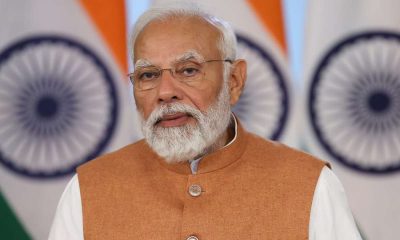
 2024 Lok Sabha Elections16 hours ago
2024 Lok Sabha Elections16 hours agoPM Modi calls for high voter turnout in second phase of Lok Sabha elections 2024, says your vote is your voice
-
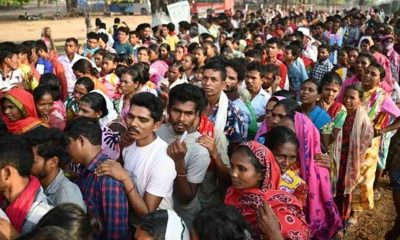
 2024 Lok Sabha Elections10 hours ago
2024 Lok Sabha Elections10 hours agoLok Sabha election 2024: Nearly 50% voter turnout recorded in second phase till 3 pm
-
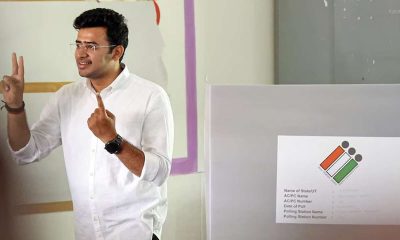
 2024 Lok Sabha Elections9 hours ago
2024 Lok Sabha Elections9 hours agoElection Commission books BJP MP Tejasvi Surya for seeking votes in the name of religion
-

 India News15 hours ago
India News15 hours agoSalman Khan house firing case: NIA interrogates arrested shooters Sagar Pal, Vicky Gupta for three hours
-
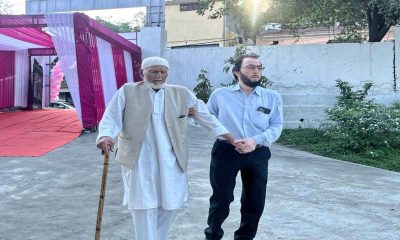
 2024 Lok Sabha Elections14 hours ago
2024 Lok Sabha Elections14 hours agoLok Sabha elections 2024: 102-year-old man walks to polling booth to cast his vote in Jammu











